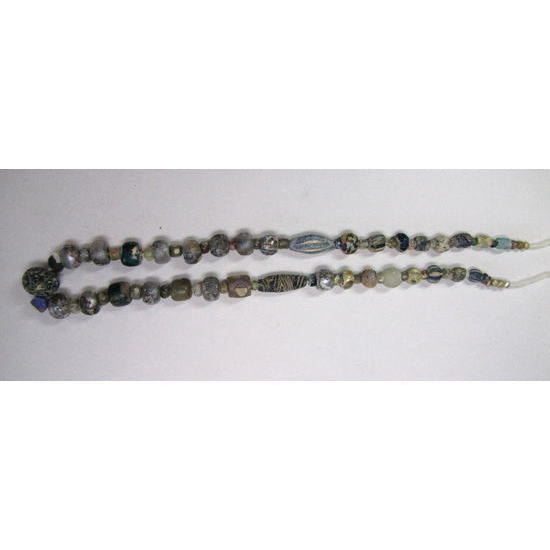MALAIKA
Ancient Roman Iridescent Glass
Ancient Roman Iridescent Glass
SKU:hn0609-008
Couldn't load pickup availability
Product Description: These Roman beads, dating from the 100s BCE to the 300s CE, feature stunning iridescence. This phenomenon occurs due to the weathering of glass buried underground for centuries, resulting in a silvery or iridescent sheen.
Specifications:
- Origin: Alexandria (modern-day Egypt)
-
Size:
- Length: 52cm
- Central Bead Dimensions: 13mm x 16mm
- Condition: As these are antique items, they may have scratches, cracks, or chips.
About Roman Beads:
Era: 100s BCE to 300s CE
Origin: Alexandria (modern-day Egypt), coastal regions of Syria, and other areas.
From the 1st century BCE to the 4th century CE, glass craftsmanship flourished significantly in the Roman Empire. Many glass products were created as trade goods and exported widely. These glass items, made along the Mediterranean coast, spread across a vast area from Northern Europe to Japan.
Initially, opaque glass was predominant, but by the 1st century CE, transparent glass gained popularity and became widespread. Beads crafted as jewelry pieces hold high value due to their rarity. In contrast, fragments of glass cups or pitchers with drilled holes, often found in excavations, are more abundant and can be relatively inexpensive even today.
Share



